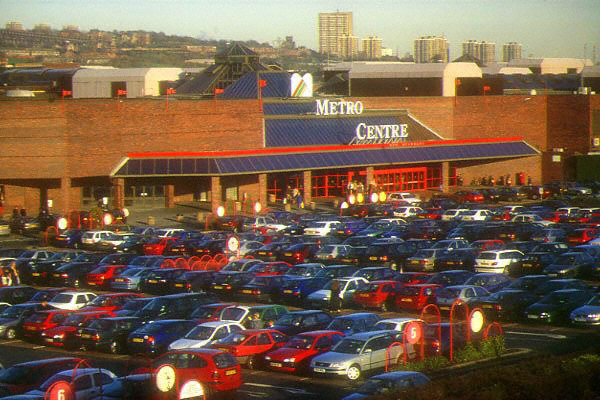Commercial/Industrial Areas
Commercial land use includes storefront commercial and office uses, personal and nonprofessional service establishments, and restaurants. Industrial uses include warehousing and distribution as well as manufacture of beverages, chemical, acid and fertilizer manufacture and storage, distillation of coal, and metal foundries.
Nonpoint source runoff from commercial land areas such as shopping centers, business districts, and office parks, and large parking lots or garages may contain high hydrocarbon loadings and metal concentrations that are twice those found in the average urban area (Woodward-Clyde, 1991). These loadings can be attributed to heavy traffic volumes and large areas of impervious surface on which these pollutants concentrate (Long Island Sound Regional Planning Board, 1982).
Gas stations, in most communities, are designated as a commercial land use and are subject to the same controls as shopping centers and office parks. However, gas stations may generate high concentrations of heavy metals, hydrocarbons, and other automobile-related pollutants that can enter runoff (Santa Clara Valley Water Control District, 1992). Since gas stations have high potential loadings and pollutant profiles similar to those of industrial sites, the good housekeeping controls used on industrial sites are usually necessary.
The characteristics of industrial waste waters can differ considerably both within and among industries. The impact of industrial discharges depends not only on their
collective characteristics, such as biochemical oxygen demand and the amount of suspended solids, but also on their content of specific inorganic and organic substances. Three options are available in controlling industrial wastewater. Control can take place at the point of generation in the plant; wastewater can be pretreated for discharge to municipal treatment sources; or wastewater can be treated completely at the plant and either reused or discharged directly into receiving waters.

A shopping center
From
EPA Management Measures Guidance
and
Water Pollution and Society



